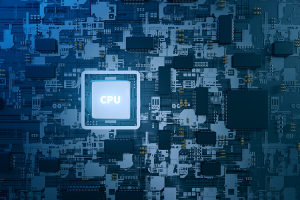 In the world of computing, two companies have dominated the market for decades: Intel and AMD. Both of these companies offer a range of processors that vary in terms of price and performance, making it difficult to decide which one is better for a specific use case. In this blog post, we will discuss the pros and cons of Intel vs AMD in the education sector, focusing on price and performance.
In the world of computing, two companies have dominated the market for decades: Intel and AMD. Both of these companies offer a range of processors that vary in terms of price and performance, making it difficult to decide which one is better for a specific use case. In this blog post, we will discuss the pros and cons of Intel vs AMD in the education sector, focusing on price and performance.
Pricing:
When it comes to price, AMD processors tend to be more affordable than their Intel counterparts. This is especially true for mid-range and budget CPUs, which are commonly used in schools and universities. AMD offers a range of processors that provide excellent value for money, with many models offering comparable or even superior performance to Intel processors in the same price range.
Intel processors, on the other hand, tend to be more expensive than AMD processors, especially at the high end. This means that if you need the best possible performance for demanding applications, you may have to pay a premium for an Intel CPU. However, for most educational applications, an AMD processor should be more than sufficient, and you can save money by opting for one of their more affordable models.
Performance:
When it comes to performance, both Intel and AMD offer a range of processors that vary in terms of speed and power consumption. However, there are some key differences between the two companies in this regard.
Intel processors are generally known for their superior single-core performance, which makes them ideal for tasks that require a lot of processing power, such as video editing or 3D rendering. However, this advantage is less significant in the education sector, where most applications are less demanding and don’t require the same level of performance.
AMD processors, on the other hand, tend to offer better multi-core performance, which makes them more suitable for multitasking and running multiple applications simultaneously. This can be especially useful in the education sector, where students may need to switch between different applications or run several programs at once.
Conclusion:
In conclusion, both Intel and AMD processors have their pros and cons when it comes to the education sector. AMD processors tend to be more affordable and offer better multi-core performance, making them a good choice for students and educators who need to run multiple applications simultaneously. Intel processors, on the other hand, excel in single-core performance and are ideal for more demanding tasks.
Ultimately, the choice between Intel and AMD comes down to your specific needs and budget. If you need the best possible performance for demanding applications, an Intel processor may be the way to go. However, for most educational applications, an AMD processor should be more than sufficient, and you can save money by opting for one of their more affordable models



